
|
Astronomy Picture Of the Day (APOD)
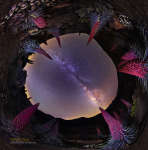 Planet of the Tajinastes
Planet of the Tajinastes
25.05.2019
What bizarre planet are these alien creatures from? It's only planet Earth, of course. The planet's home galaxy the Milky Way stretches across a dark sky in the panoramic, fisheye all-sky projection composed with a wide lens. But the imposing forms gazing skyward probably look strange to many denizens of Earth.
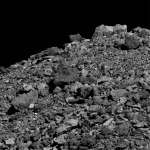 Boulders on Bennu
Boulders on Bennu
24.05.2019
An abundance of boulders litters the surface asteroid 101955 Bennu in this dramatic close-up from the OSIRIS-REx spacecraft. Taken on March 28 from a distance of just 3.4 kilometers (2.1 miles) the field of view is about 50 meters across while the light colored boulder at top right is 4.8 meters tall.
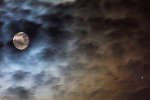 Moons Near Jupiter
Moons Near Jupiter
23.05.2019
On May 20, a nearly Full Moon and Jupiter shared this telephoto field of view. Captured when a passing cloud bank dimmed the moonlight, the single exposure reveals the familiar face of our fair planet's own large natural satellite, along with bright Jupiter (lower right) and some of its Galilean moons.
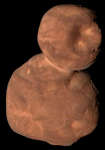 Primordial Contact Binary 2014 MU69
Primordial Contact Binary 2014 MU69
22.05.2019
Primordial contact binary 2014 MU69, also known as Ultima Thule, really is very red. In fact, it's the reddest outer solar system object ever visited by a spacecraft from Earth. Its reddish hue is believed to be due to organic materials on its surface.
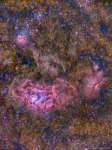 Deep Field: Nebulae of Sagittarius
Deep Field: Nebulae of Sagittarius
21.05.2019
These three bright nebulae are often featured on telescopic tours of the constellation Sagittarius and the crowded starfields of the central Milky Way. In fact, 18th century cosmic tourist Charles Messier cataloged two of them; M8, the large nebula just left of center, and colorful M20 on the top left.
 Planets of the Solar System: Tilts and Spins
Planets of the Solar System: Tilts and Spins
20.05.2019
How does your favorite planet spin? Does it spin rapidly around a nearly vertical axis, or horizontally, or backwards? The featured video animates NASA images of all eight planets in our Solar System to show them spinning side-by-side for an easy comparison.
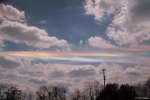 A Circumhorizontal Arc Over Ohio
A Circumhorizontal Arc Over Ohio
19.05.2019
Why would clouds appear to be different colors? The reason here is that ice crystals in distant cirrus clouds are acting like little floating prisms. Sometimes known as a fire rainbow for its flame-like appearance, a circumhorizon arc lies parallel to the horizon.
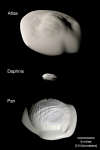 Atlas, Daphnis, and Pan
Atlas, Daphnis, and Pan
18.05.2019
Atlas, Daphnis, and Pan are small, inner, ring moons of Saturn. They are shown at the same scale in this montage of images by the Cassini spacecraft that made its grand final orbit of the ringed planet in September 2017. In fact, Daphnis was discovered in Cassini images from 2005.
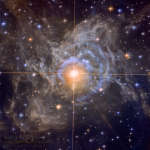 RS Puppis
RS Puppis
17.05.2019
Pulsating RS Puppis, the brightest star in the image center, is some ten times more massive than our Sun and on average 15,000 times more luminous. In fact, RS Pup is a Cepheid...
 Dark Skies: Turn on the Night
Dark Skies: Turn on the Night
16.05.2019
Have you ever experienced a really dark night sky? One common and amazing feature is the glowing band of our Milky Way galaxy stretching from horizon to horizon. If you live in or near...
|
January February March April May June July August September October November December |
|||||||||||||||||||||||||||||||||||||||||||||||||